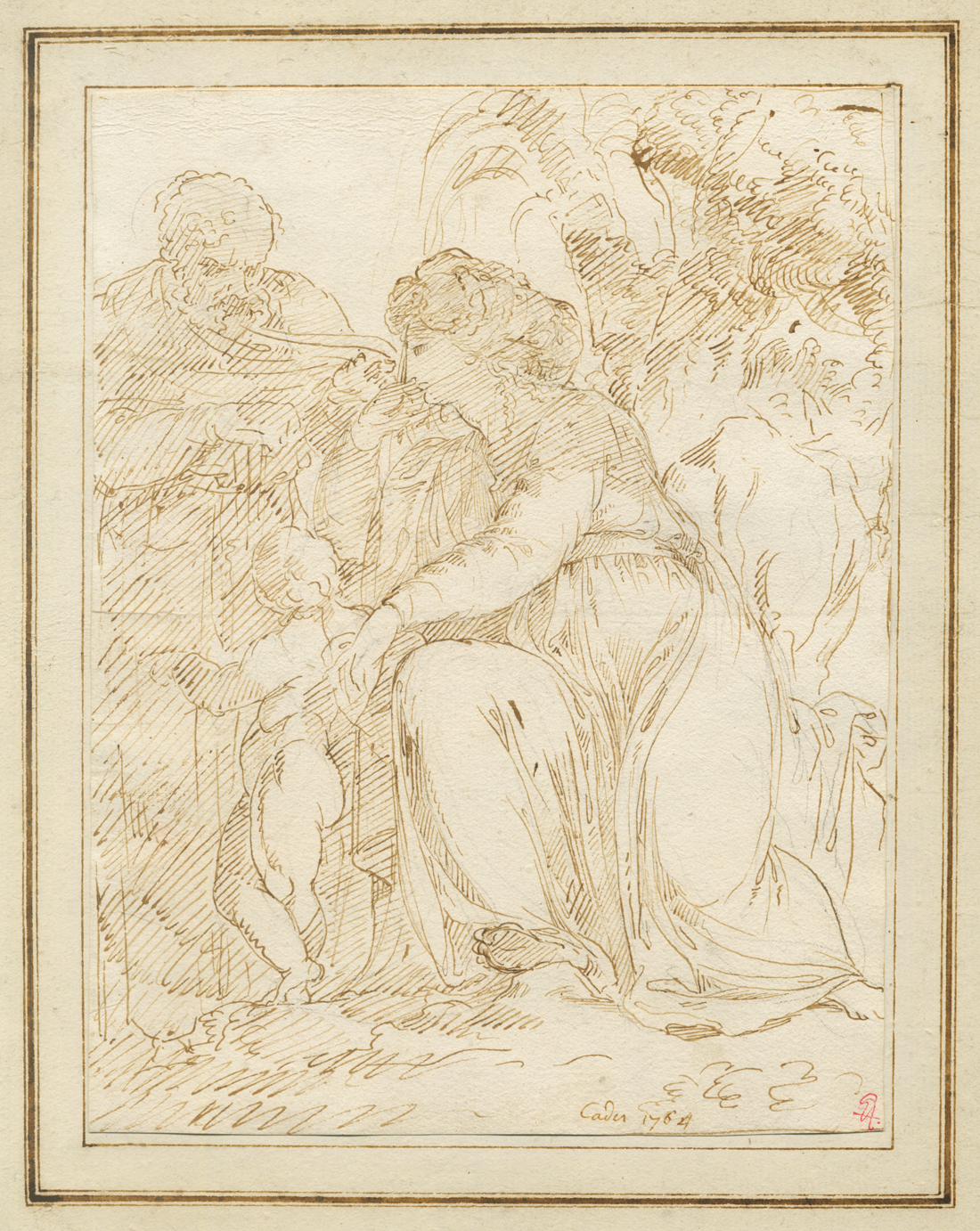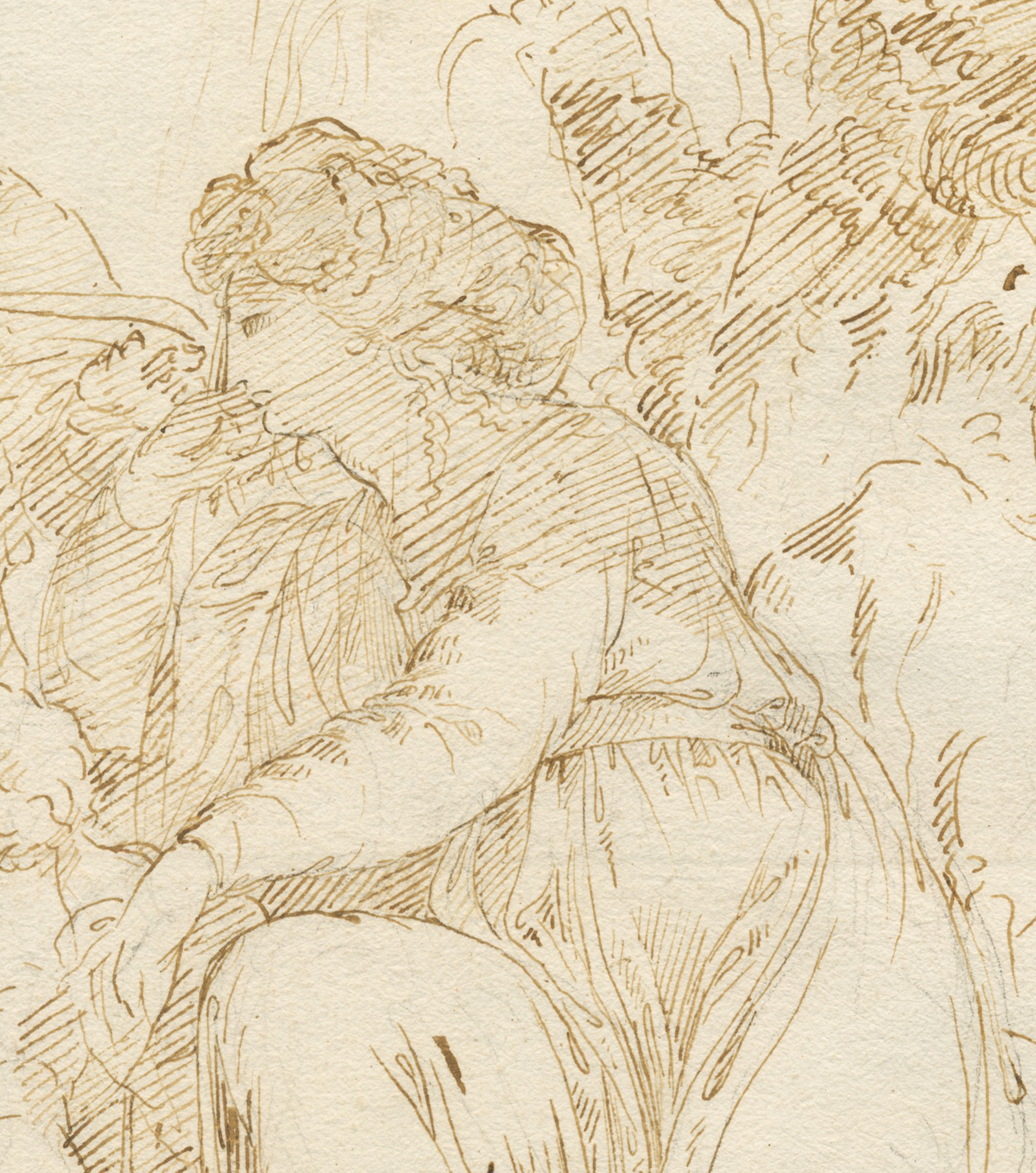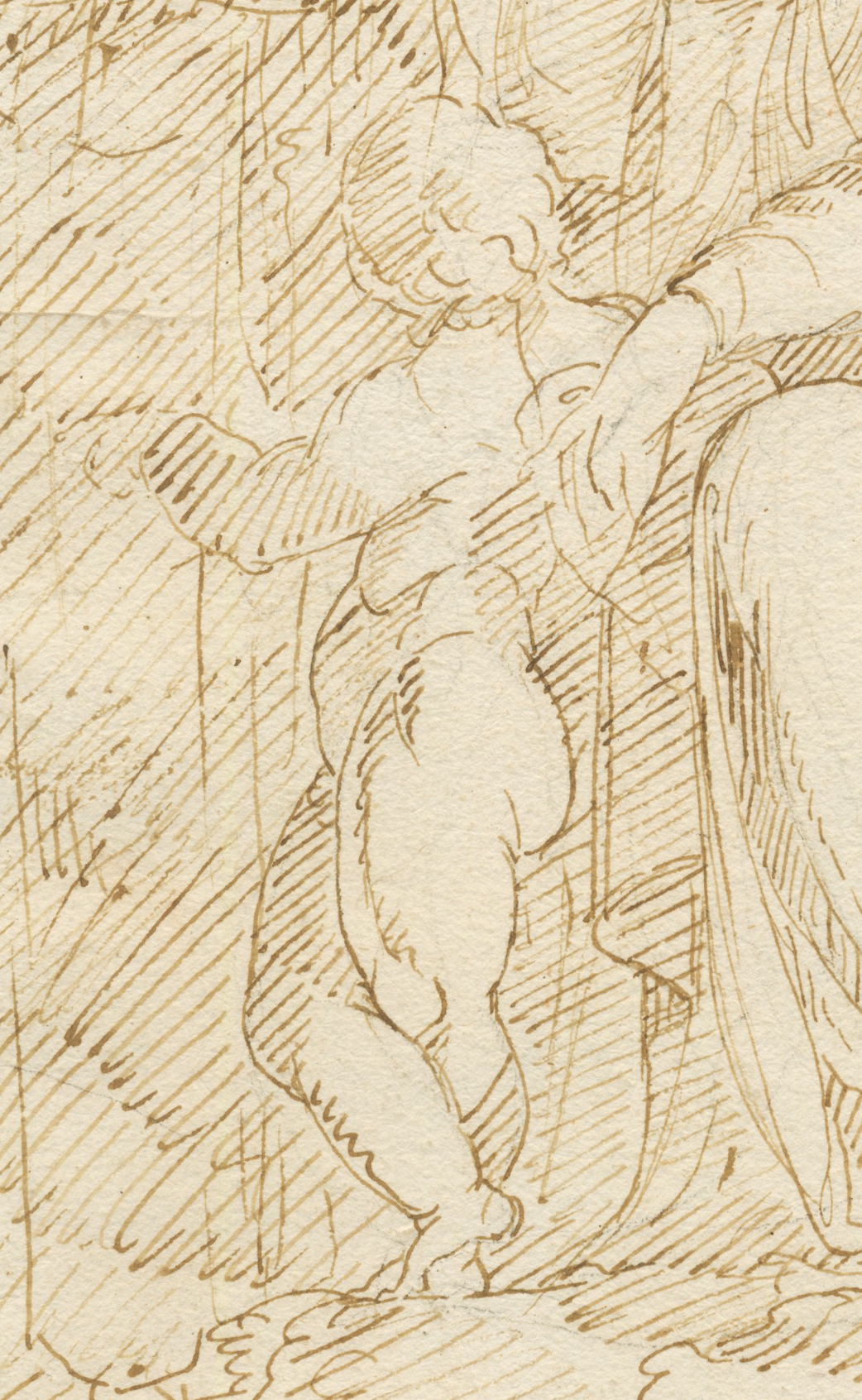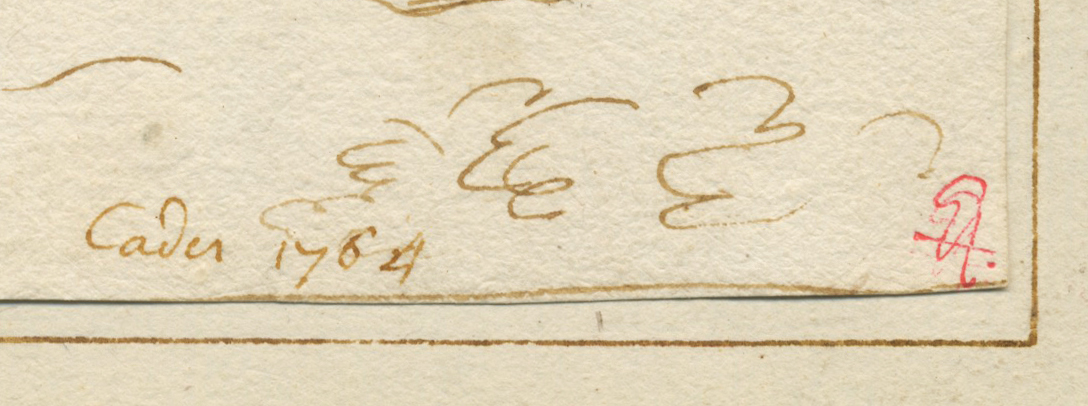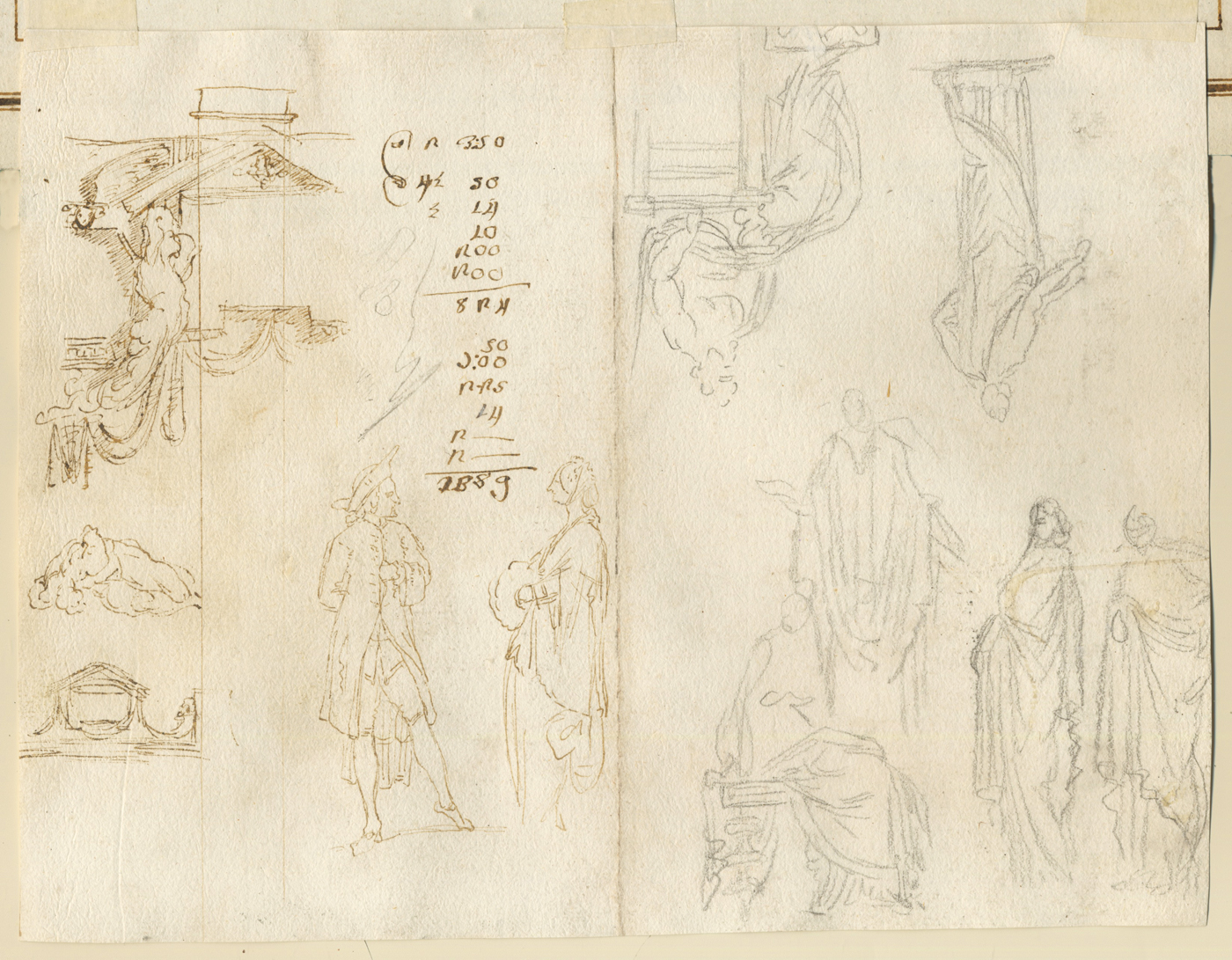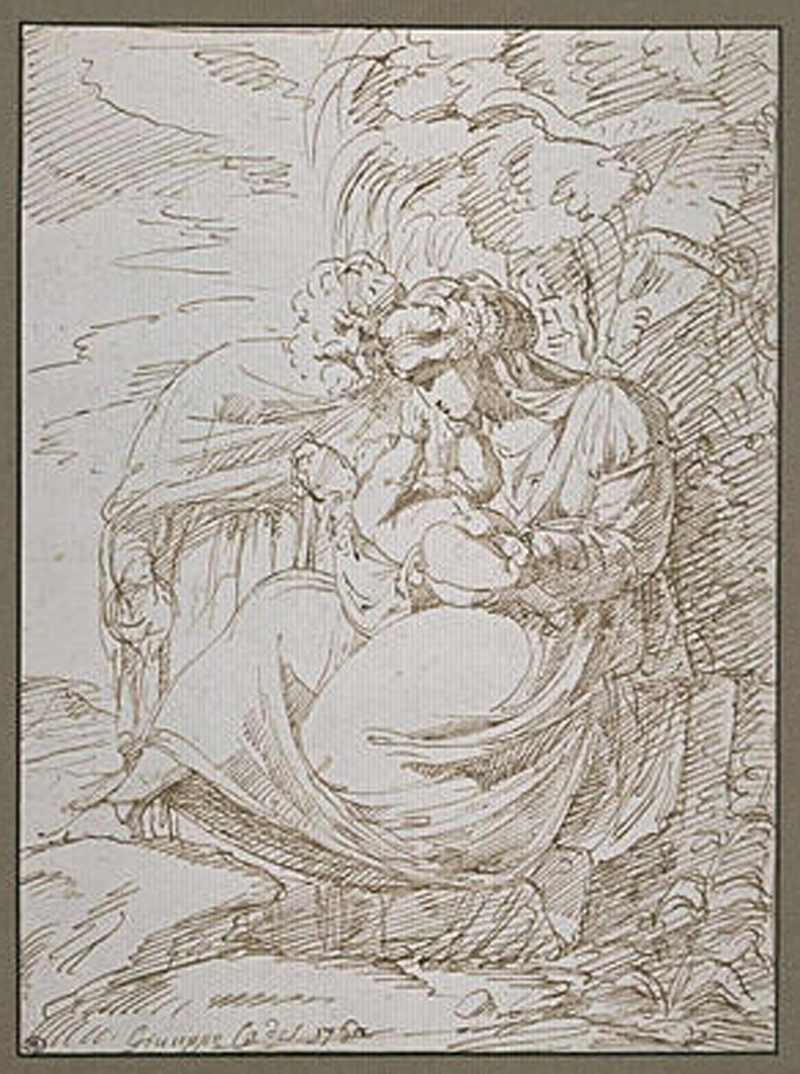GIUSEPPE CADES (Rome 1750 – 1799 Rome)
Giuseppe Cades (Rome 1750 – 1799 Rome)
The Rest on the Flight to Egypt (recto)
Studies of Figures and Architecture (verso)
Black chalk, pen and brown ink, brown ink framing lines, fragmentary watermark with letter V, 267 x 204 mm (10.5 x 8 inch)
Signed and dated ‘Cades 1764’ (pen and brown ink, lower right); inscriptions of accounts (pen and brown ink, verso)
Provenance
~ Philipp Hermann (1899–1968), Karlsruhe, Germany (Lugt 1352a)
~ Bernhard Himmelheber (1898–1966), Karlsruhe, Germany, and by descent until 20161
***
Giuseppe Cades trained at the Accademia di San Luca under Domenico Corvi (1721–1803) and is considered one of the chief exponents of the Roman Classical tradition in the mid-eighteenth century.2 Following differences with his master, he was expelled
from Corvi’s studio in 1766, despite being awarded prizes for drawing by the Accademia in the same year. From the 1770s Cades received commissions for works based on subjects taken from ancient history. His early paintings reflect an interest in the Neoclassical works of French and Northern European artists.
By the 1780s Cades had achieved pre-eminence in Rome as a history painter and decorator. Important commissions from this period include the decoration of the apartments in the Palazzo Altieri in Rome (1787–91), and the Sala dell’Ariosto in the Palazzo Chigi at Ariccia (1788–90). He was also successful as a painter of religious subjects. Cades developed an expressive, proto-Romanic vision of Classical Antiquity that tended to favour grand, often violent interpretations of historial themes.
Cades easily ranks among the most celebrated Neoclassical draughtsmen in Italy. His drawings reflect the influence of Henry Fuseli (1741–1825), Johan Tobias Sergel (1740–1814) and their circle. The present powerful sheet was executed while Cades was still working in the studio of Corvi when the hugely talented Giuseppe was only fourteen years of age. A drawing by the artist of the same subject and of similar composition is preserved in the Musée du Louvre, Paris (see fig).3 The Louvre drawing is signed and dated 1762, when the prodigy was only twelve years old, and illustrates that Cades was fascinated by the deeply emotive subject over several years. They are among the very earliest known works by the artist. The stylized influence of the Neoclassical approach is evident in both works. The vigorously executed hatching is typical for the artist, and the delineation of Christ’s physique recalls drawings by Michelangelo, which Cades could have studied in Rome.
The attribution of this work has been confirmed by Maria Teresa Caracciolo.
SOLD
1. Himmelheber was married to Hermann’s sister and the two collectors knew each other well.
2. For the artist, see Maria Teresa Caracciolo, Giuseppe Cades 1750-1799 et la Rome de son temps, Paris 1992 and Nicholas Turner, European Drawings 4: Catalogue of the Collections (J. Paul Getty Museum), Los Angeles 2001, p. 16.
3. Pen and brown ink, 269 x 200 mm, inv. no. RF 36019.
